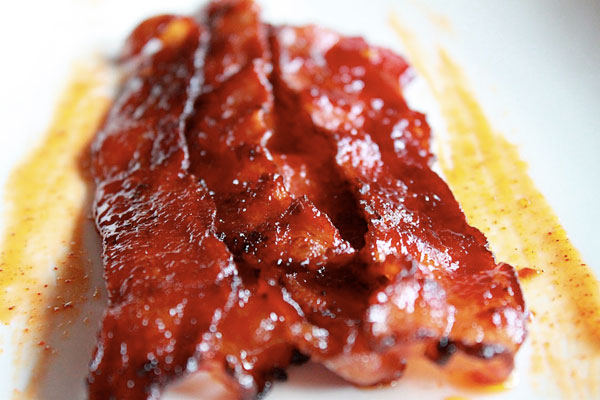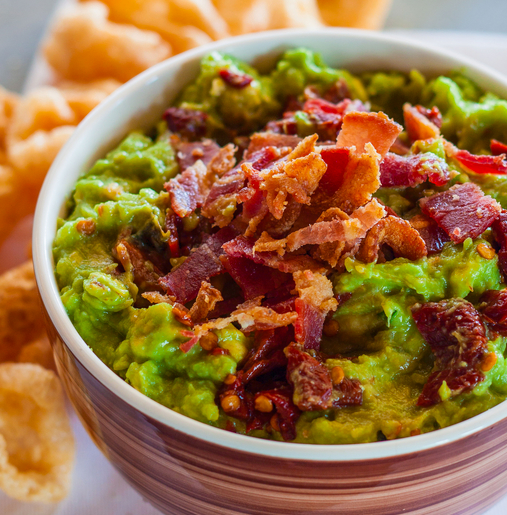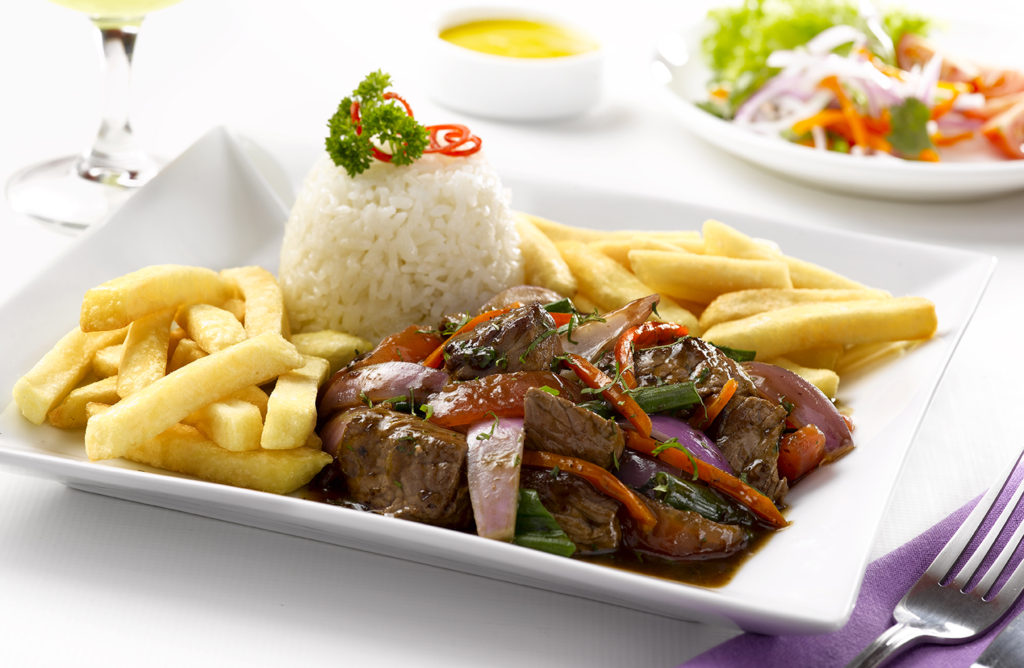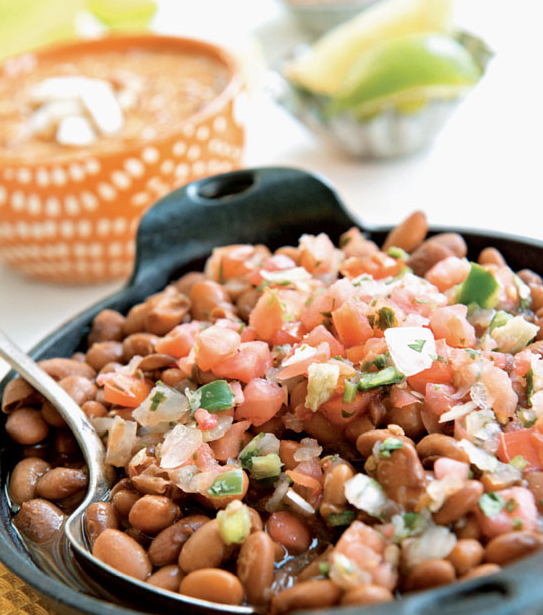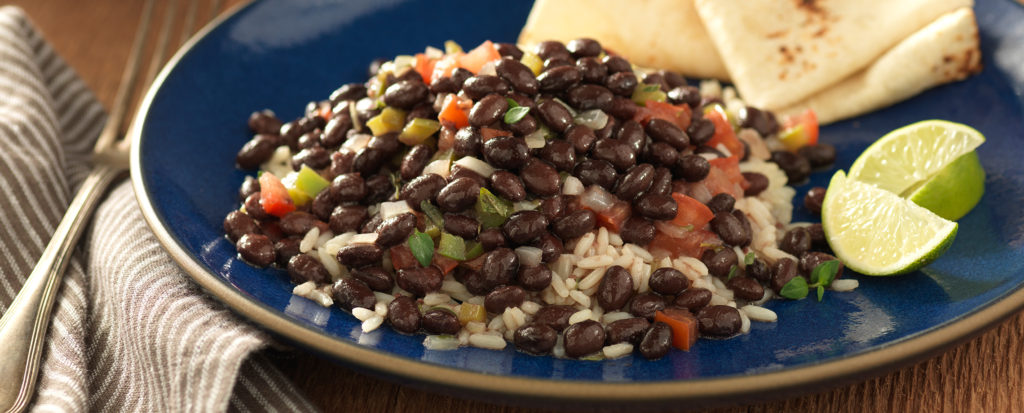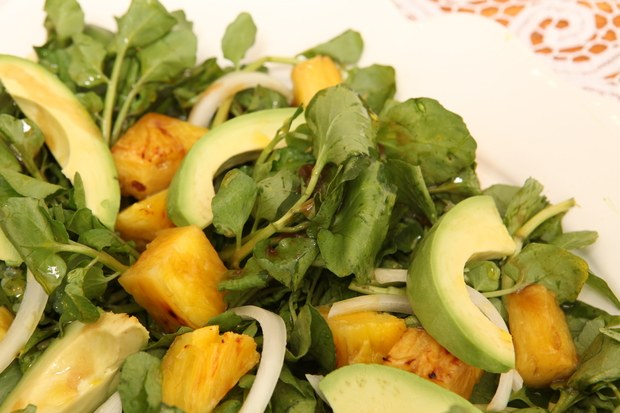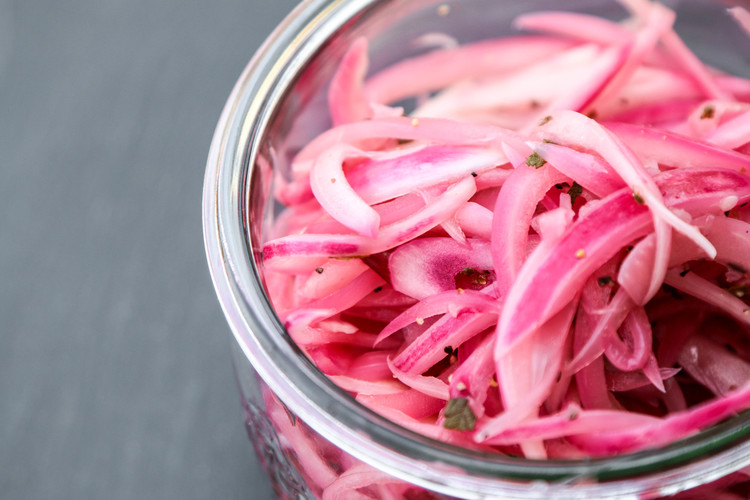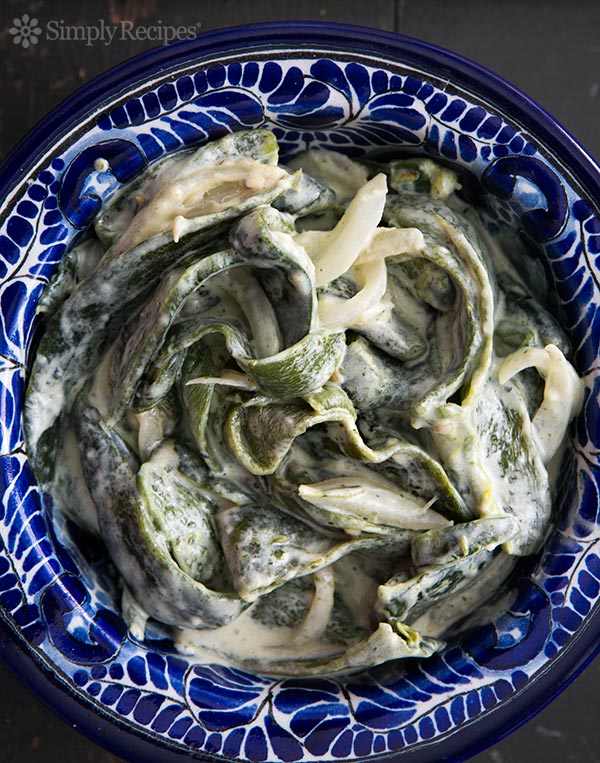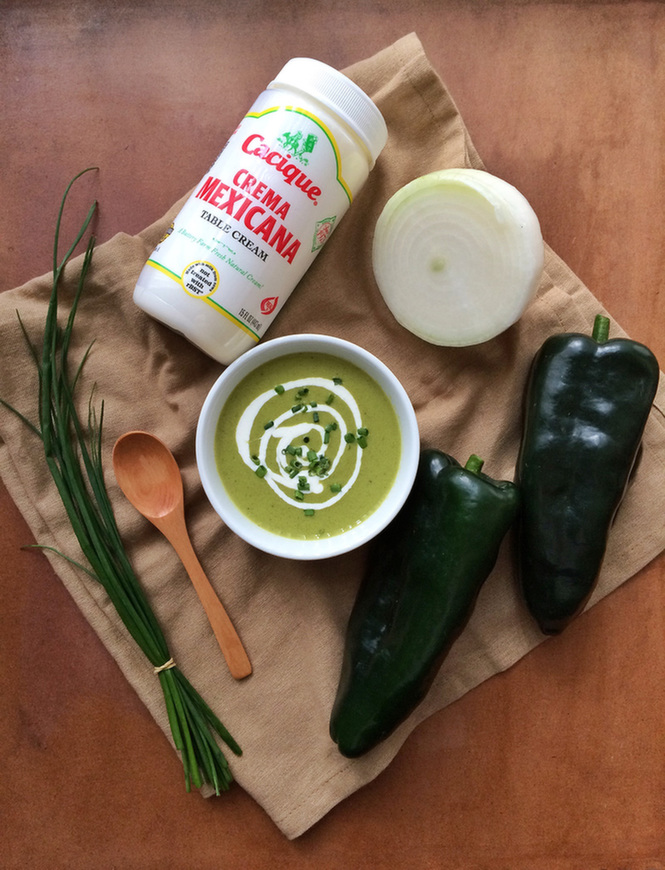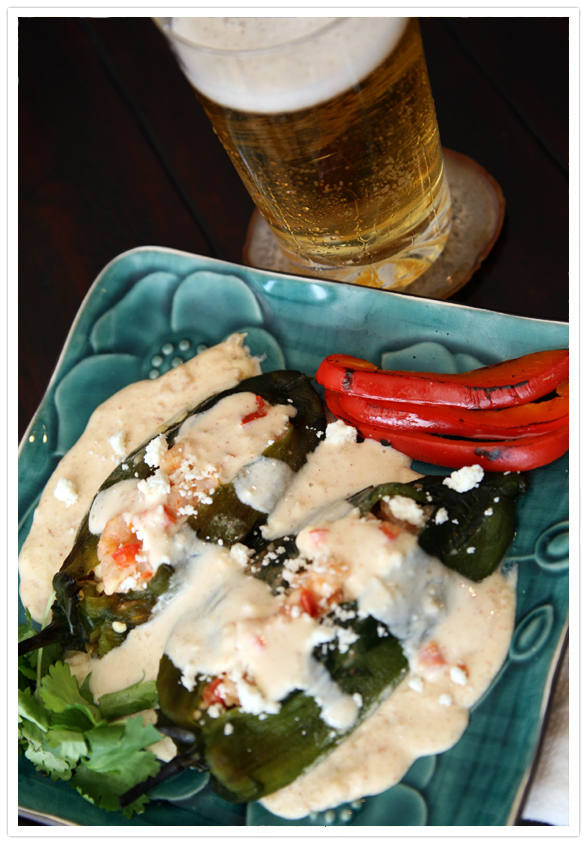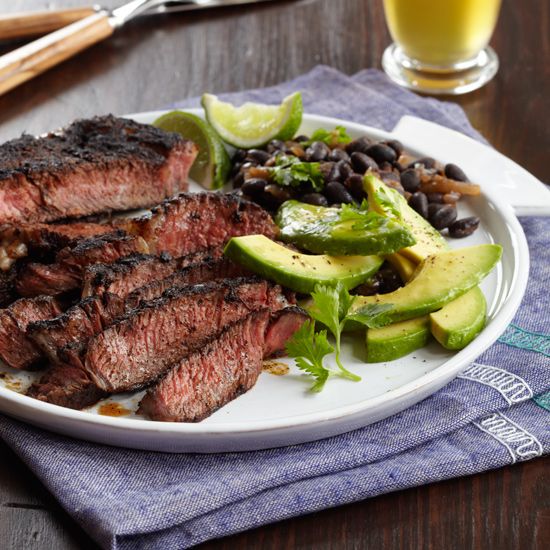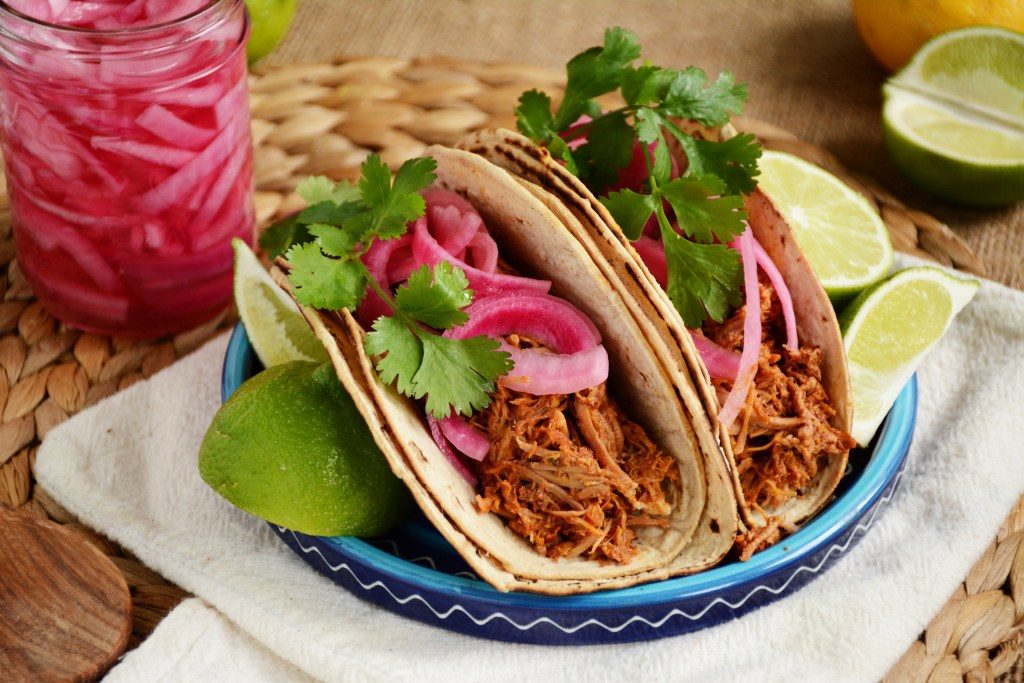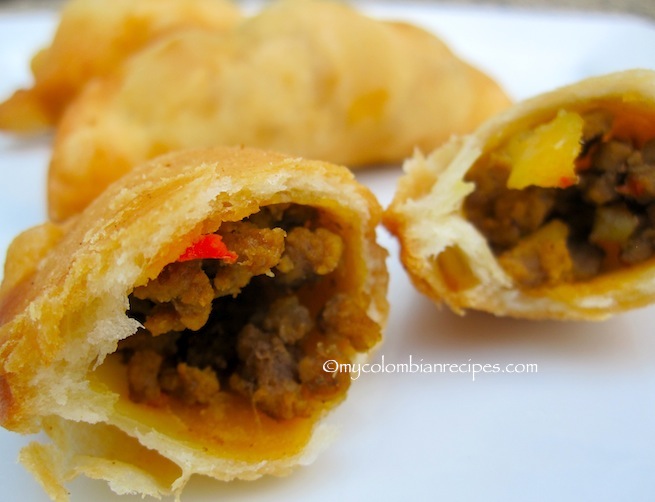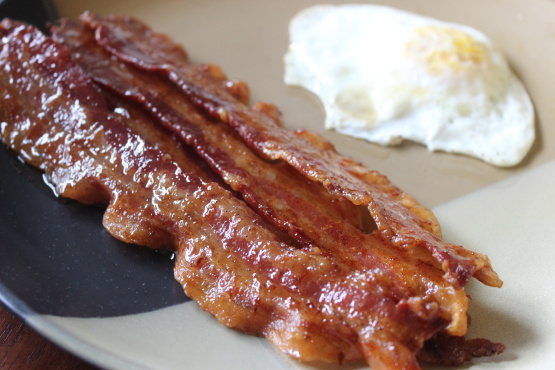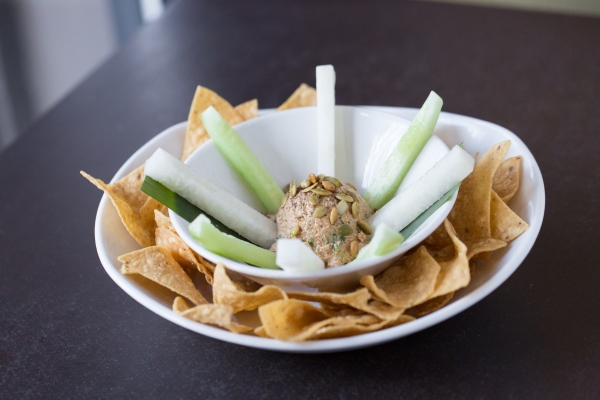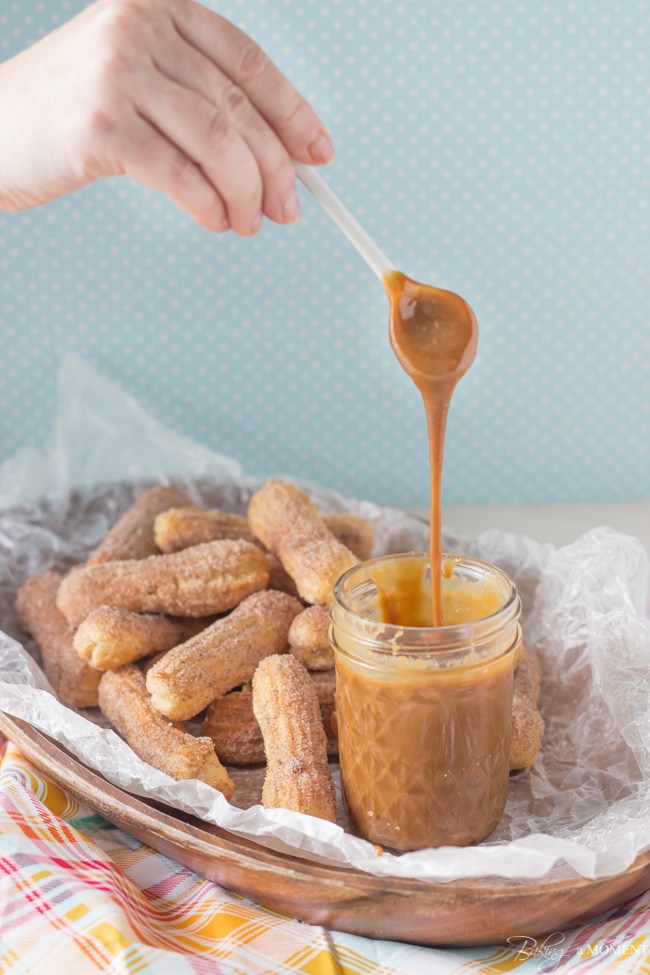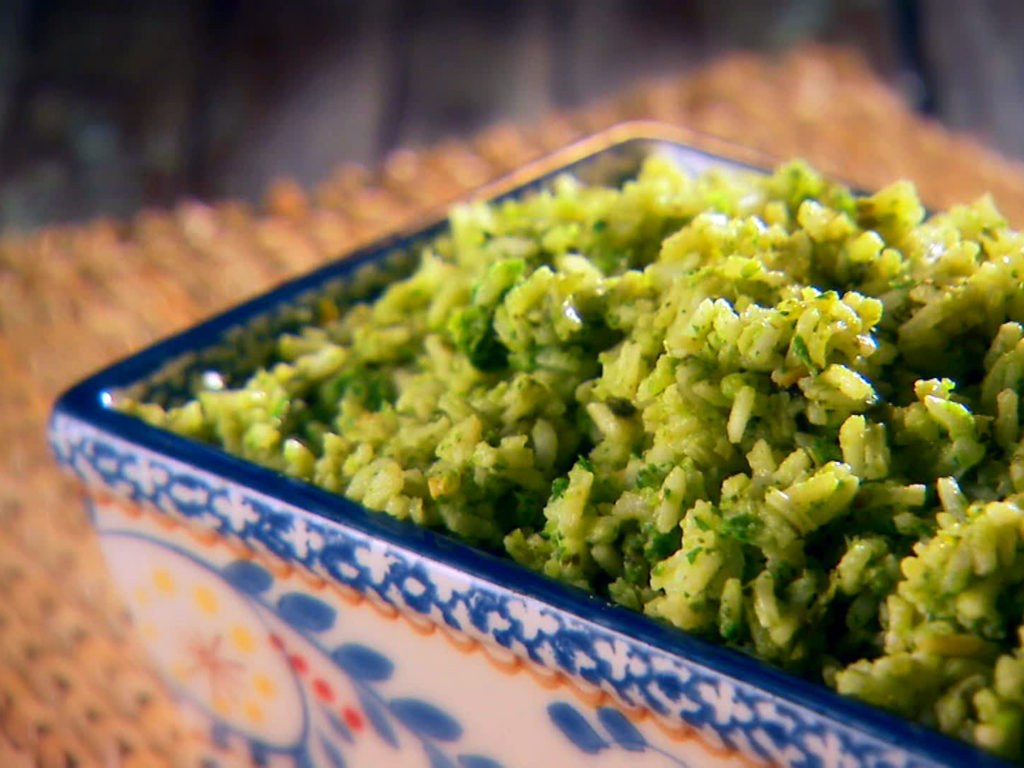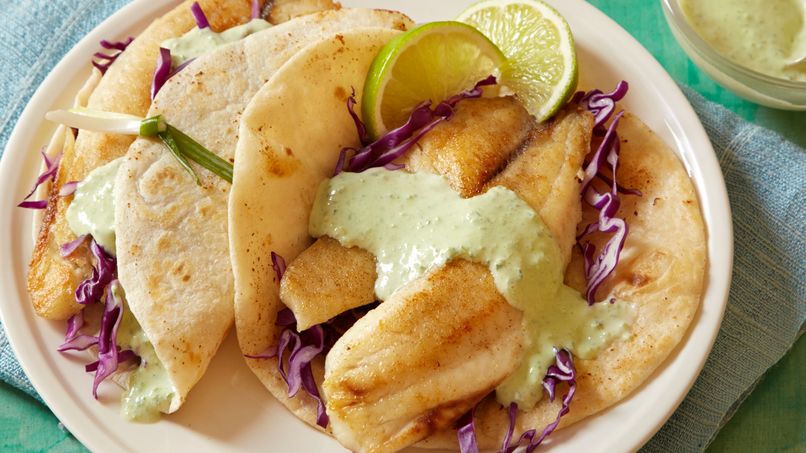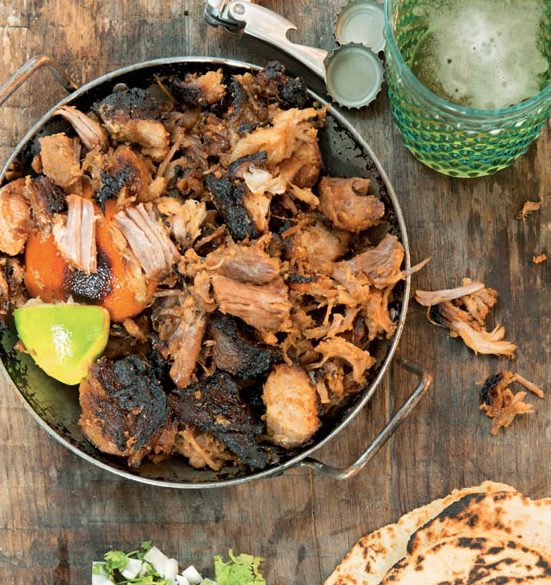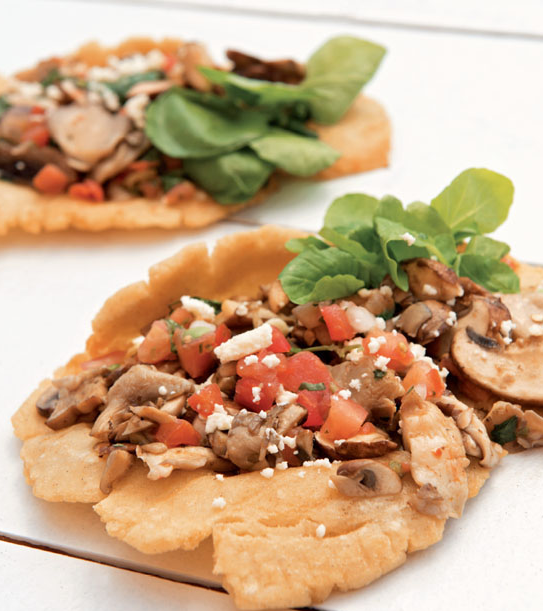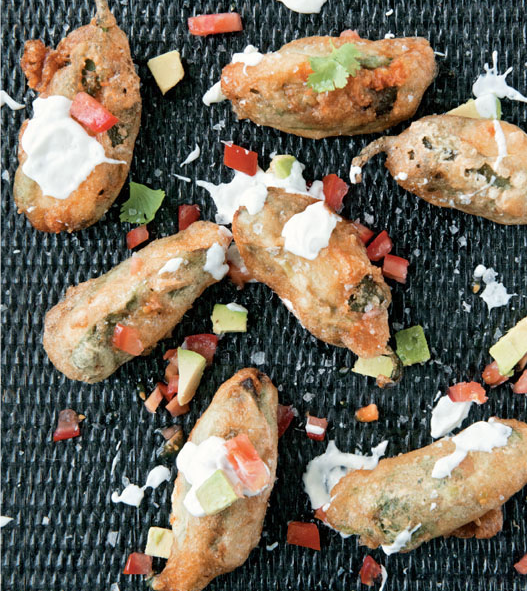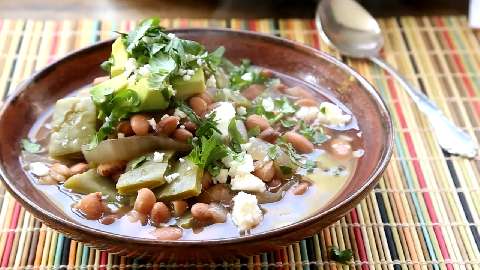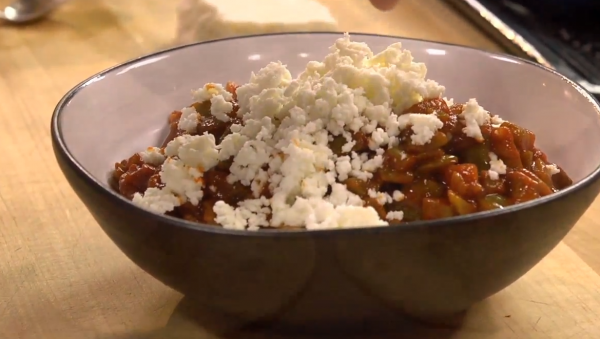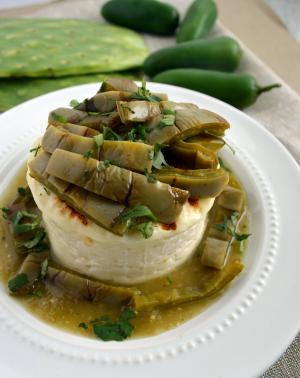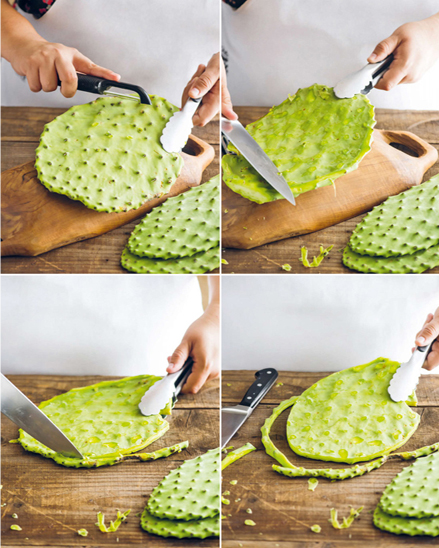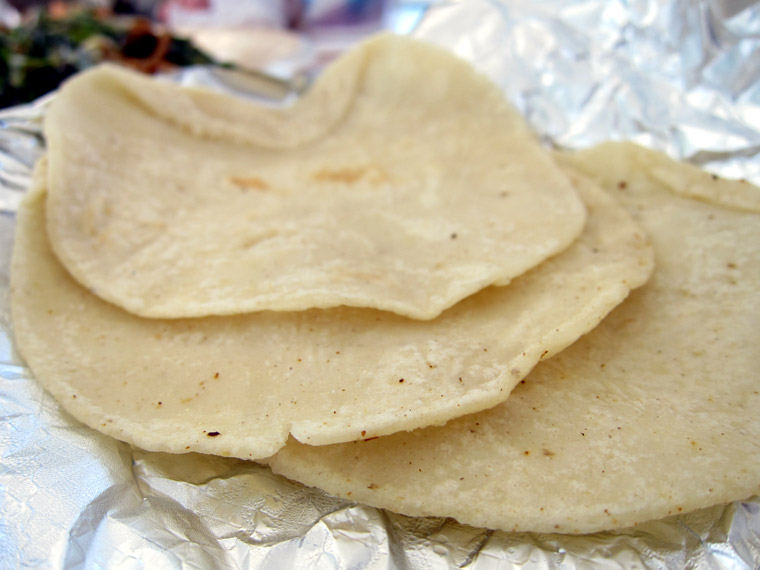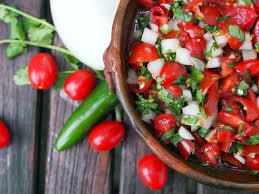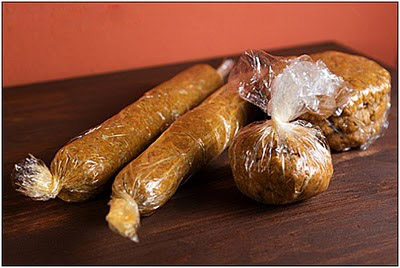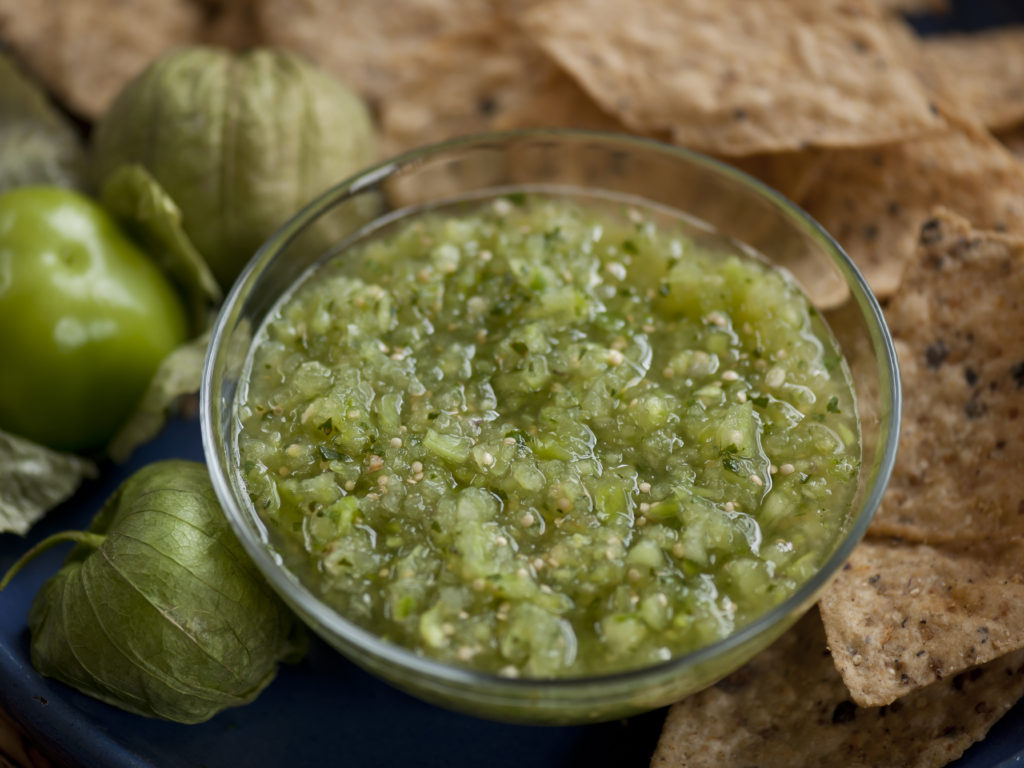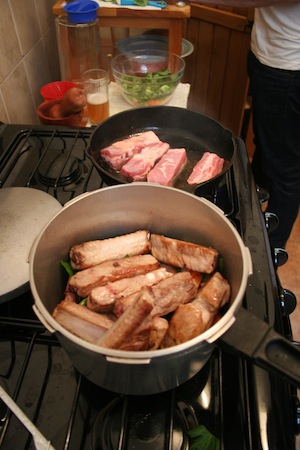 3 pounds pork short ribs
3 pounds pork short ribs
Vegetable oil for sautéing
Sea salt and freshly ground black pepper
1 onion, unpeeled, sliced
3 cloves garlic, unpeeled, crushed with the flat side of a knife
1 large carrot and 1 stalk celery, chopped coarsely
1 bay leaf
1 dried chipotle pepper
A mix of 12 medium-sized dried chilis, such as guajillos, pasillas, and anchos, split open and stemmed and seeded
2 corn tortillas
6 tomatillos, husked
4 cloves garlic
To serve:
8-12 corn tortillas, heated, for tacos
1 bunch cilantro or parsley, chopped
1 small red onion (for quick pickling)
1 clove garlic
1/3 cup of mild vinegar, such as white-wine or cider
salt
In a heavy-bottomed frying pan, add just enough oil to cover the bottom of the pan and turn heat to medium. Using paper towels, or preferably a kitchen towel that will be quickly dropped into the wash, tamp dry the ribs on all sides. (This is key: Wet ribs won’t brown.) Season the ribs on all sides with salt and pepper and add to hot pan, bone side up. Brown the ribs on as many sides as you can. If the pan begins to scorch, turn the heat down. When the ribs are well browned, remove them and set them aside, and turn heat to low. (You may have to do this in batches). Add a cup or so of water to deglaze the pan, which means scraping the pan with a wooden spoon to liberate the flavorful browned bits that accumulated there. Turn off heat. Now arrange the sliced onion, the garlic, the bay leaf, the carrot and celery chunks, and the chipotle at the bottom of a Dutch oven-style pot (heavy) pot with a tight-fitting lid, and lay the ribs over the. Add the deglazing water from the frying pan, and add enough extra water to submerge the a little more than ribs halfway. Bring slowly to a simmer, cover, and turn heat to lowest setting. (You can also place the covered pot in an oven pre-heated to 300 degrees.) Let the ribs simmer for about 3 hours, then check. The meat should be fork tender and falling off the bone. (If it’s not, allow more time.) When the meat is done, turn the heat off and remove the ribs and any meat that has fallen off, setting them aside. (If making the dish a day ahead, wrap in foil and store in fridge overnight. If you’re making it for same-day eating, you can leave them out on a plate, covered with foil.) Pour the hot liquid through a fine strainer, straining out onions, etc., into a large measuring cup or bowl. Allow to cool in the fridge for at least an hour. This will allow the fat to rise to the top and harden, so it can easily get taken out. Defatting the stock in this way will lead to a clearer-tasting, more vivid sauce. Meanwhile, while the ribs are simmering, make the pickled-onion garnish. Slice the red onion thin and place the slices in a bowl. Pour boiling water over the onions until covered, and let them sit in it for a minute or two. Drain the water and return blanched onion slices to the bowl. add a pinch of salt, a grind of pepper, and a crushed and peeled clove of garlic. Add vinegar until onion slices are covered, and set aside.
Now make the sauce. Place foil at the bottom of a large cast-iron or other heavy skillet and place over medium heat. Toast the garlic gloves and tomatillos, turning occasionally, until the garlic has softened and turned black in spots and the tomatillos have blackened a bit and started to split open. Remove the foil from the pan, being careful not to spill the tomatillo juices. Peel the toasted garlic and drop it into a blender or food processor. Dump the tomatillos, juice and all, into the blender with the garlic. Set aside. Now toast the tortillas in the same skillet, until they’ve blackened a bit and gotten dried out. Tear one in half and add it to the blender. Set the other aside. Toast the chilis on the same skillet, maintaining medium heat. Open them flat and press them into the skillet with a tongs, a few at a time, a few seconds each side. Lay them into a bowl and and submerge with hot water for at least 15 minutes. Add the rehydrated chilis—discarding the water—to the blender with the garlic, tomatillos, and tortillas. Give it a heavy pich of salt and a lashing of ground pepper, and blend until smooth. You will probably have to scrape the sides of the blender down with a spatula. If the mixture is too dry to blend, add a little water. If it’s to loose and saucy, add a chunk of the reserved tortilla. What you should end up with is a thick and smooth paste.
Now you’ve got a chili paste, ribs that are falling off the bone, and a rich broth. It’s time to bring them all together. Add about the paste to a large pot, and stir in enough broth to make it nice and saucy—not to thick, not too thin. Add the ribs and any meat that has fallen off. Cover, and let the sauce come slowly to a simmer over medium-low heat. When the ribs are heated through, spread all the meat and bone on a platter, and spoon a little sauce over it, reserving the rest to serve at table in a bowl. Garnish with chopped cilantro, pickled onions, a lashing of your best sea salt, and a grind or five of black pepper. Serve with hot tortillas and side dishes—I always think braised greens go well with pork.
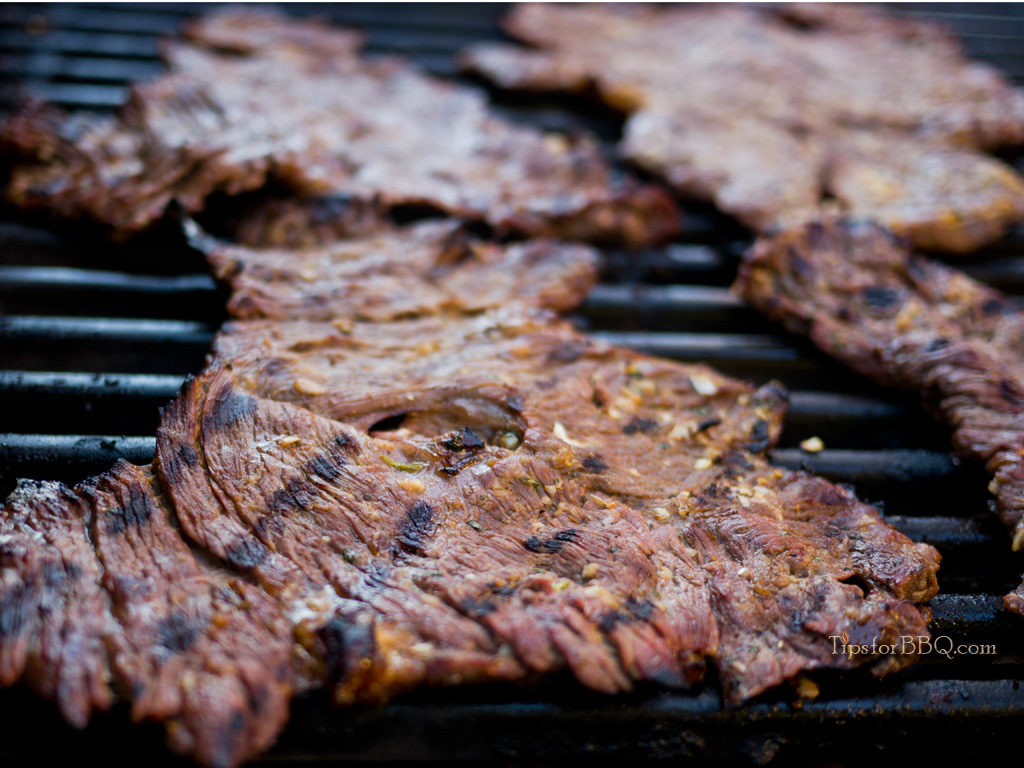 oil
oil
